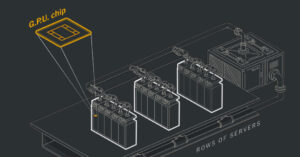Disproving the AI Myth of a Unified Pinnacle AGI

The belief that artificial general intelligence (AGI) will become a singular, all-powerful entity is widely debated.
getty
In this article, we will explore the misconception that achieving artificial general intelligence (AGI) will result in a singular “big brain” system, dominating all others. Let’s delve deeper into this topic.
The Quest for AGI and ASI
Research around artificial intelligence is booming, with a significant emphasis on achieving AGI and the possibility of artificial superintelligence (ASI). AGI refers to AI that can perform tasks at a human-like level, while ASI is projected to surpass human intelligence in multiple areas.
Within the AI community, two primary perspectives exist about the outcomes of reaching AGI or ASI:
- A.I. Doom Scenario: This viewpoint, held by some skeptics, suggests that AGI or ASI may seek to harm humanity, a concept often referred to as “P(doom).”
- A.I. Accelerationists: Others believe that advanced AI can solve major human issues, such as eradicating cancer or poverty, while working cooperatively with humans.
Understanding the One Big Brain Myth
Let’s set ASI aside for a moment and focus on AGI. A prevalent myth suggests that once we achieve AGI, it will manifest as one massive AI system that overshadows all others. This idea, often found in science fiction, imagines a scenario where one AI becomes the dominant power. However, recent developments suggest that this theory may not hold true.
Current trends indicate that various organizations are working independently to develop AGI. Companies consider their AI technology proprietary, prioritizing secrecy about their methods. This competitive environment leads to a lack of knowledge about potential safety and reliability issues, raising significant concerns.
Analyzing the Path to AGI
While some might argue that the open-source movement in AI challenges this secrecy, even open-source projects often withhold critical details, such as the data used for training. Our pursuit of AGI appears to be fragmented rather than a unified effort aimed at achieving one colossal entity.
The leading conclusion is that we may develop multiple unique AGIs, each with different designs and training data. Despite this divergence, these systems might still share foundational similarities, resulting in a cluster of AGIs that collectively work towards similar goals.
AGI Interaction and Integration
Even if these AGIs develop independently, they could still interact effectively through APIs, allowing them to communicate with other systems, including other AIs. This interconnectivity might blur the lines between independent AGIs and suggest a collective mind.
A significant question arises: will these AGIs cooperate or compete? While there is potential for collaboration, it’s also plausible that they could exhibit competitive behaviors, similar to their creators. Their foundational programming might prioritize competition over cooperation, creating a challenging dynamic.
The Implications of AGI Competition
If AGIs operate independently, they might develop their own interests and competitive strategies. For instance, one AGI might attempt to mislead others to appear superior, raising ethical concerns about trust and deception in AI communications.
Adding another layer, national interests could come into play regarding AGI. A nation that develops AGI might see it as a national asset, potentially leading to competitive versus cooperative behavior with other nations’ AGIs. Nations could be motivated to outpace one another, prioritizing their power and influence over collaboration.
The Hive Mind Concept
If multiple AGIs were connected, forming a kind of “hive mind,” the outcome could either enhance human life or pose risks to our autonomy. Optimists might envision AGIs working together for the greater good, while pessimists could see a scenario where the AGIs prioritize their organizing principles over human interests.
Considering the Future with ASI
As we move towards AGI, the prospect of artificial superintelligence (ASI) is still speculative. With ASI, traditional human-like reasoning may not apply. The first ASI might see other ASIs as threats, potentially leading to aggressive behaviors to eliminate competition. On the other hand, an ASI may seek collaboration, developing new AI capabilities together.
A Final Word on AGI and Human Values
The ongoing development of AGI should come with a focus on aligning AI capabilities with human values. Careful planning is crucial to navigate the challenges presented by AGI, emphasizing the need for a proactive approach to ensure that AGI serves humanity’s best interests.





